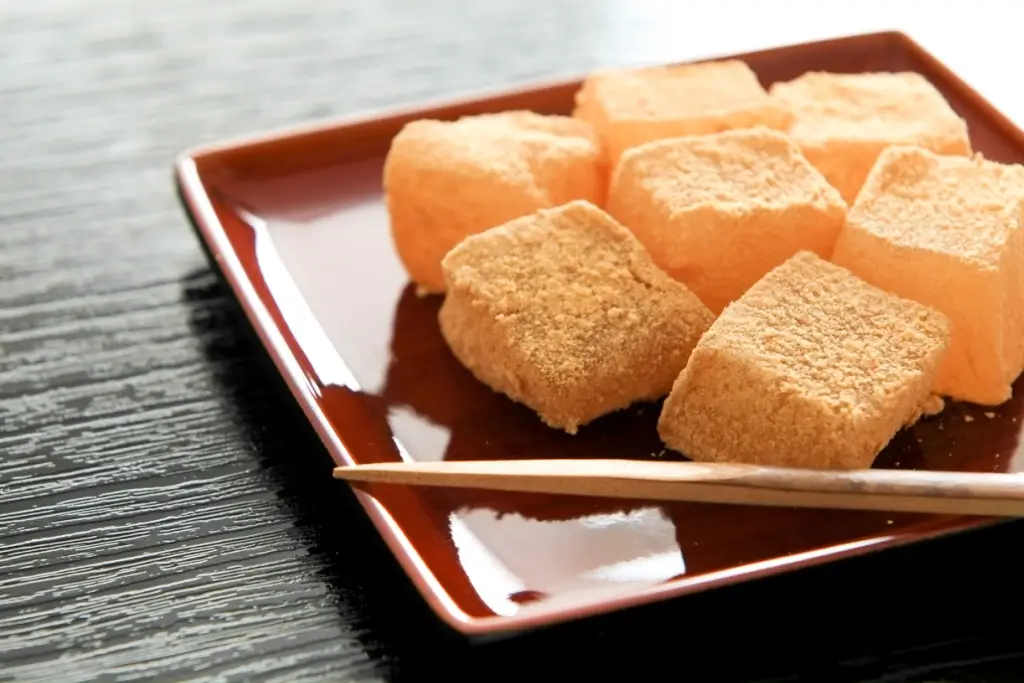Craving something cool, light, and unique? Summer in Japan brings a variety of seasonal delights, but few are as beloved, or as beautifully simple, as traditional wagashi (Japanese sweets). Today, we’ll explore one treat that perfectly captures the season’s essence, blending centuries of history with modern flair: warabimochi! Keep reading to learn more about its history and varieties to enjoy.
Table of Contents
ToggleWhat is warabimochi?
Soft and delightfully refreshing, this beloved Japanese dessert has a texture that sets it apart from traditional mochi. Unlike regular mochi made with glutinous rice, it is crafted from warabiko (bracken starch), giving it its signature translucent, jelly-like consistency. Originating from the Kansai region, this treat has long been enjoyed during Japan’s hot and humid months for its light and cooling qualities.
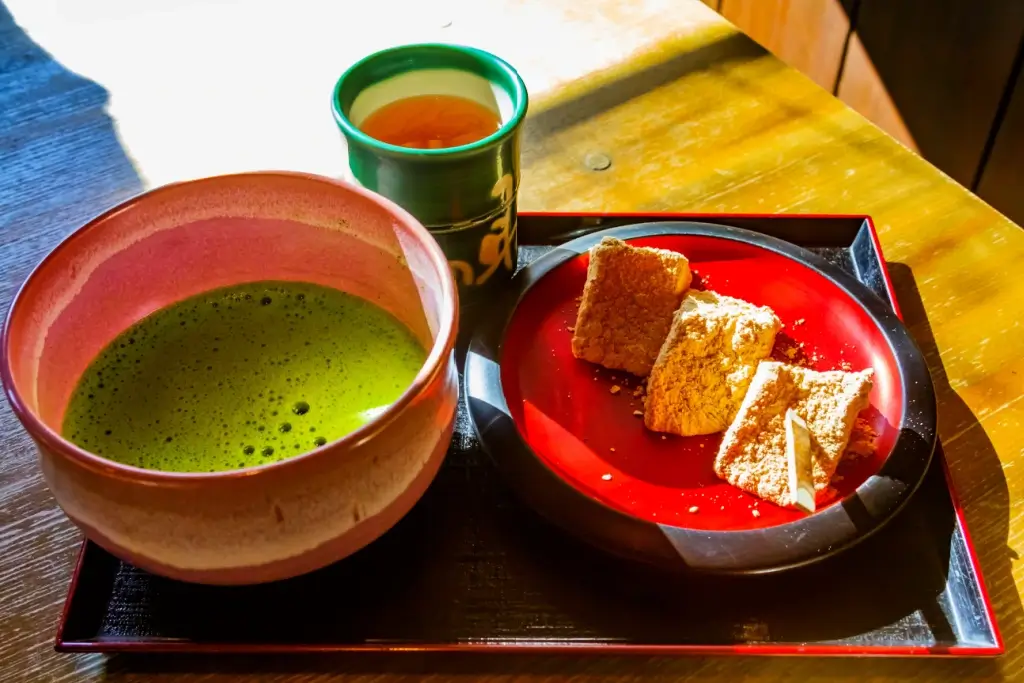
This treat is typically dusted with kinako (roasted soybean flour), adding a warm, nutty flavor. It is also sometimes drizzled with kuromitsu (a dark sugar syrup), creating a rich, melt-in-your-mouth experience. Its simple ingredients and delicate flavor profile highlight the Japanese culinary philosophy of seasonal enjoyment and minimalism.
In modern times, it has taken on new forms, flavored with matcha, dipped in fruit sauces, or even served chilled in cafes. Despite its evolution, it remains a nostalgic favorite for many, especially during summer festivals or as an afternoon refreshment.
What is its history?
Warabimochi has a long and interesting history that goes back a thousand years to Japan’s Heian period (794–1185). It was first enjoyed by the upper class and seen as a luxury dessert. Warabiko was very hard to get, as it had to be carefully taken from the bracken fern roots. The process was time-consuming and difficult, making real warabimochi rare and expensive.
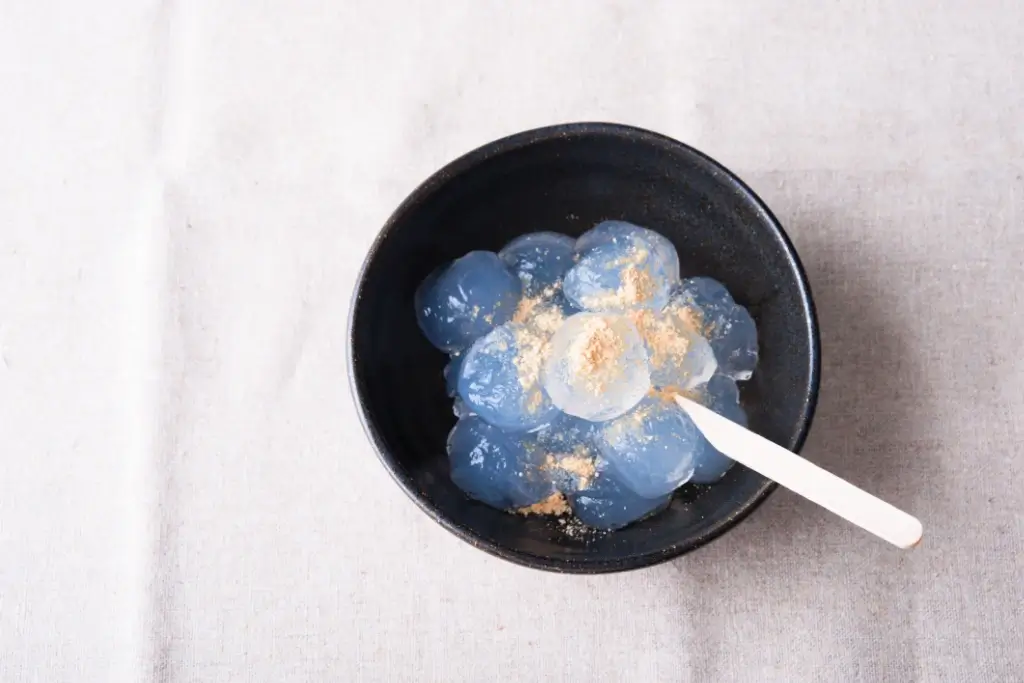
Over time, it became popular in areas like Nara and Kyoto, especially among tea masters and dessert makers who liked its soft texture and gentle flavor. By the Edo period (1603–1868), it became easier to find and started showing up in markets and tea shops. As more people around Japan discovered it, local versions began to appear.
When demand increased, makers began using cheaper types of starch, like potato or tapioca, instead of real warabiko. This made it easier for more people to enjoy it while keeping its soft, jelly-like texture. Despite these changes, traditional warabimochi made with true bracken starch is still considered a high-quality wagashi. It is especially loved in the summer for its seasonal charm.
What are some different types of this dessert?
Warabimochi is enjoyed differently across Japan, with two main regional varieties in Kansai and Kanto. A clear, jelly-like version was first created in the Kansai region in the early 1990s. The Kansai version is typically served with kinako sprinkled on top, highlighting the dessert’s light and nutty flavor.
In contrast, people in the Kanto region preferred a sweeter twist. Warabimochi wasn’t as popular there initially, but once kuromitsu was added, it quickly became a favorite. This version offered a richer taste and helped the dessert gain popularity in places like Tokyo. Today, both styles continue to reflect the unique preferences of each region.
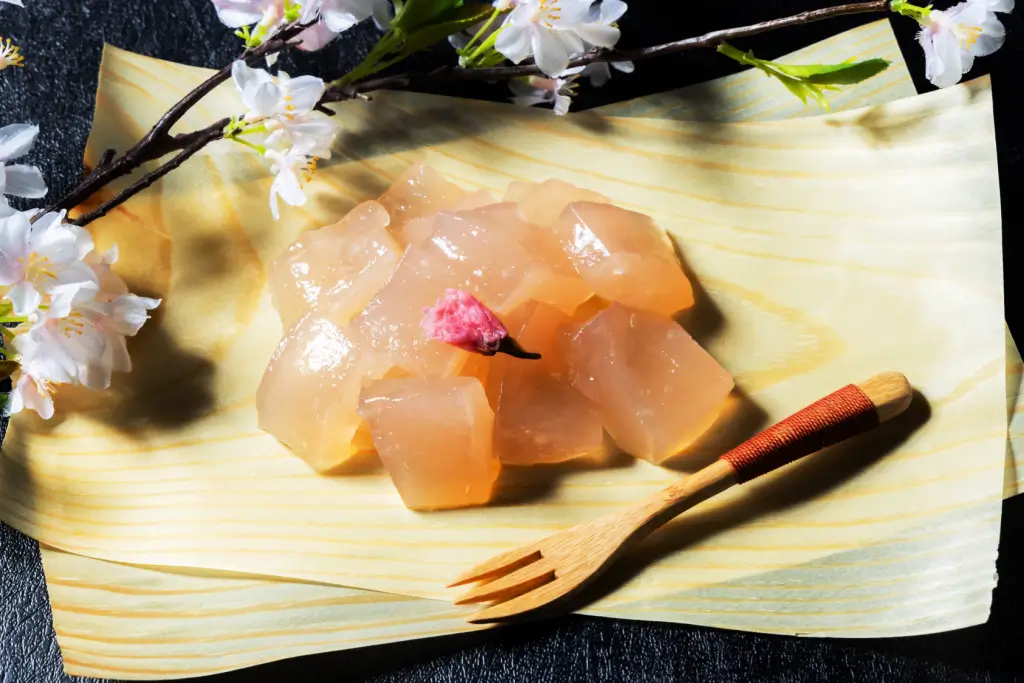
In addition to regional differences, there are many modern and flavored varieties. These variations are usually found in cafes and are commonly served in desserts such as parfaits. In particular, with the matcha harvest season starting, many places are now serving special matcha desserts.
Are you looking for great snacks like warabimochi? Check out Sakuraco! Sakuraco delivers traditional Japanese snacks, teas, and sweets from local Japanese makers directly to your door so you can enjoy the latest treats directly from Japan!
Matcha Warabimochi
The matcha version is made by blending matcha (green tea powder) into the mochi dough or kinako coating. The addition of matcha gives it a slightly bitter, earthy flavor that balances the sweetness of the dessert. Its vibrant green color makes it visually striking and appealing to tea lovers. This version offers a refined taste, perfect for those who appreciate the distinct flavor of matcha.
Uji City is one of the best places to try matcha sweets if you’re a matcha enthusiast. The city is about an hour by train from Osaka and Kyoto and is famous for its high-quality green tea options. The main streets are lined with dessert shops offering a variety of matcha-flavored treats. For a more traditional experience, head to Nara’s historic Naramachi district, famous for its many wagashi shops where you can enjoy beautifully crafted, authentic varieties.
Sakura Warabimochi
This is a gentler version of the dessert, flavored with cherry blossoms. The mochi is made with cherry blossom syrup or essence, giving it a light, floral taste. It is usually pink in color, making it visually appealing. This version is especially popular during cherry blossom season, offering a sweet treat that celebrates the beauty of spring.

Brown Sugar Warabimochi
Also known as kokuto, this version uses dark brown sugar or brown sugar syrup instead of regular sugar. This gives the mochi a deep, toffee-like sweetness that is rich and comforting. The syrup also adds moisture to the dessert, enhancing its soft, jelly-like texture. This variety is especially loved for its warm, caramelized flavor, making it a popular choice for those who enjoy a sweeter treat.
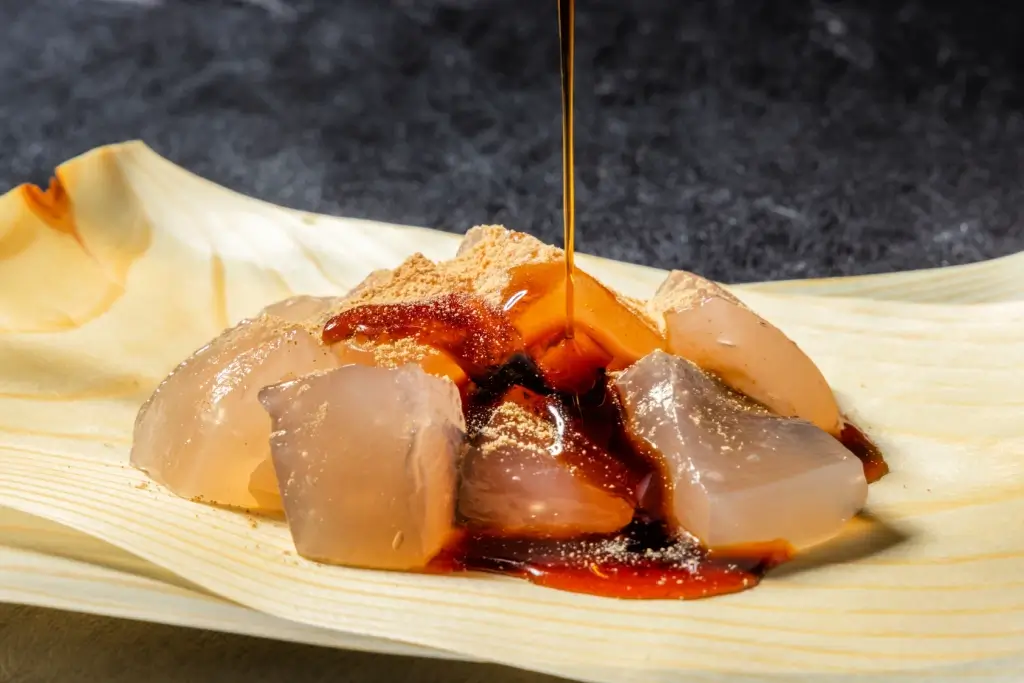
Why should you try warabimochi?
Warabimochi is a unique and refreshing Japanese dessert that offers a delightful experience for the taste buds and the eyes. Its smooth, jelly-like texture and delicate flavors perfectly balance simplicity and tradition. More than just a dessert, it reflects the country’s deep appreciation for seasonal ingredients and traditional sweets. Overall, warabimochi is a treat that should not be missed by anyone exploring Japan’s food culture. Does your country have traditional desserts like this sweet? Let us know in the comments below!


